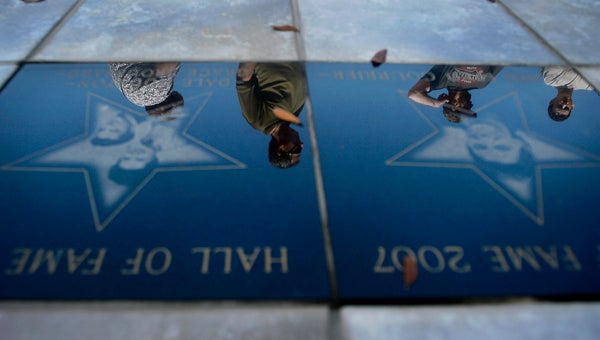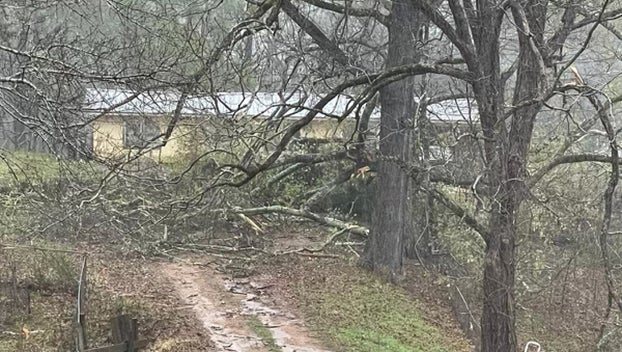Sandy leaves death, damp and darkness in wake
Published 6:34 am Tuesday, October 30, 2012
NEW YORK (AP) — As Superstorm Sandy marched slowly inland, millions along the East Coast awoke Tuesday without power or mass transit, with huge swaths of the nation’s largest city unusually vacant and dark.
New York was among the hardest hit, with its financial heart in Lower Manhattan shuttered for a second day and seawater cascading into the still-gaping construction pit at the World Trade Center. President Barack Obama declared a major disaster in the city and Long Island.
The storm that made landfall in New Jersey on Monday evening with 80 mph sustained winds killed at least 16 people in seven states, cut power to more than 7.4 million homes and businesses from the Carolinas to Ohio, caused scares at two nuclear power plants and stopped the presidential campaign cold.
The massive storm reached well into the Midwest: Chicago officials warned residents to stay away from the Lake Michigan shore as the city prepares for winds of up to 60 mph and waves exceeding 24 feet well into Wednesday.
“This will be one for the record books,” said John Miksad, senior vice president for electric operations at Consolidated Edison, which had more than 670,000 customers without power in and around New York City.
An unprecedented 13-foot surge of seawater — 3 feet above the previous record — gushed into Gotham, inundating tunnels, subway stations and the electrical system that powers Wall Street, and sent hospital patients and tourists scrambling for safety. Skyscrapers swayed and creaked in winds that partially toppled a crane 74 stories above Midtown.
Right before dawn, a handful of taxis were out on the streets, though there was an abundance of emergency and police vehicles.
Remnants of the former Category 1 hurricane were forecast to head across Pennsylvania before taking another sharp turn into western New York by Wednesday morning. Although weakening as it goes, the massive storm — which caused wind warnings from Florida to Canada — will continue to bring heavy rain and local flooding, said Daniel Brown, warning coordination meteorologist at the National Hurricane Center in Miami.
As Hurricane Sandy closed in on the Northeast, it converged with a cold-weather system that turned it into a monstrous hybrid of rain and high wind — and even snow in West Virginia and other mountainous areas inland.
Just before it made landfall at 8 p.m. near Atlantic City, N.J., forecasters stripped Sandy of hurricane status — but the distinction was purely technical, based on its shape and internal temperature. It still packed hurricane-force wind, and forecasters were careful to say it was still dangerous to the tens of millions in its path.
While the hurricane’s 90 mph winds registered as only a Category 1 on a scale of five, it packed “astoundingly low” barometric pressure, giving it terrific energy to push water inland, said Kerry Emanuel, a professor of meteorology at MIT.
Officials blamed at least 16 deaths on the converging storms — five in New York, three each in New Jersey and Pennsylvania, two in Connecticut, and one each in Maryland, North Carolina and West Virginia. Three of the victims were children, one just 8 years old.
Sandy, which killed 69 people in the Caribbean before making its way up the Eastern Seaboard, began to hook left at midday Monday toward the New Jersey coast. Even before it made landfall, crashing waves had claimed an old, 50-foot piece of Atlantic City’s world-famous Boardwalk.
“We are looking at the highest storm surges ever recorded” in the Northeast, said Jeff Masters, meteorology director for Weather Underground, a private forecasting service.
Sitting on the dangerous northeast wall of the storm, the New York metropolitan area got the worst of it.
An explosion at a ConEdison substation knocked out power to about 310,000 customers in Manhattan, said Miksad.
“We see a pop. The whole sky lights up,” said Dani Hart, 30, who was watching the storm from the roof of her building in the Navy Yards.
“It sounded like the Fourth of July,” Stephen Weisbrot said from his 10th-floor apartment.
New York University’s Tisch Hospital was forced to evacuate 200 patients after its backup generator failed. NYU Medical Dean Robert Grossman said patients — among them 20 babies from neonatal intensive care that were on battery-powered respirators — had to be carried down staircases and to dozens of waiting ambulances.
Not only was the subway shut down, but the Holland Tunnel connecting New York to New Jersey was closed, as was a tunnel between Brooklyn and Manhattan. The Brooklyn Bridge, the George Washington Bridge, the Verrazano-Narrows Bridge and several other spans were closed due to high winds.
The three major airports in the New York area — LaGuardia, Newark Liberty and Kennedy — remained shut down Tuesday.
A construction crane atop a $1.5 billion luxury high-rise in midtown Manhattan collapsed in high winds and dangled precariously. Thousands of people were ordered to leave several nearby buildings as a precaution, including 900 guests at the ultramodern Le Parker Meridien hotel.
Alice Goldberg, 15, a tourist from Paris, was watching television in the hotel — whose slogan is “Uptown, Not Uptight” — when a voice came over the loudspeaker and told everyone to leave.
“They said to take only what we needed, and leave the rest, because we’ll come back in two or three days,” she said as she and hundreds of others gathered in the luggage-strewn marble lobby. “I hope so.”
Trading at the New York Stock Exchange was canceled again Tuesday — the first time the exchange suspended operations for two consecutive days due to weather since an 1888 blizzard struck the city.
Fire destroyed at least 50 homes Monday night in a flooded neighborhood in the Breezy Point section of the borough of Queens, where the Rockaway peninsula juts into the Atlantic Ocean. Firefighters told WABC-TV that they had to use a boat to rescue residents because the water was chest high on the street. About 25 people were trapped in one home, with two injuries reported.
Airlines canceled around 12,500 flights because of the storm, a number that was expected to grow.
Off North Carolina, not far from an area known as “the Graveyard of the Atlantic,” a replica of the 18th-century sailing ship HMS Bounty that was built for the 1962 Marlon Brando movie “Mutiny on the Bounty” sank when her diesel engine and bilge pumps failed. Coast Guard helicopters plucked 14 crew members from rubber lifeboats bobbing in 18-foot seas.
A 15th crew member who was found unresponsive several hours after the others was later pronounced dead. The Bounty’s captain was still missing.
One of the units at Indian Point, a nuclear power plant about 45 miles north of New York City, was shut down around 10:45 p.m. Monday because of external electrical grid issues, said Entergy Corp., which operates the plant. The company said there was no risk to employees or the public.
And officials declared an “unusual event” at the Oyster Creek nuclear power plant in Lacey Township, N.J., the nation’s oldest, when waters surged to 6 feet above sea level during the evening. Within two hours, the situation at the reactor — which was offline for regular maintenance — was upgraded to an alert, the second-lowest in a four-tiered warning system. Oyster Creek provides 9 percent of the state’s electricity.
In Baltimore, fire officials said four unoccupied rowhouses collapsed in the storm, sending debris into the street but causing no injuries. Meanwhile, a blizzard in far western Maryland caused a pileup of tractor-trailers that blocked the westbound lanes of Interstate 68 on slippery Big Savage Mountain near the town of Finzel.
“It’s like a long-tailed cat in a room full of rocking chairs up here,” said Bill Wiltson, a Maryland State Police dispatcher.
Hundreds of miles from the storm’s center, gusts topping 60 mph prompted officials to close the port of Portland, Maine, and scaring away several cruise ships. A state of emergency in New Hampshire prompted Vice President Joe Biden to cancel a rally in Keene and Republican nominee Mitt Romney’s wife, Ann, to call off her bus tour through the Granite State.
About 360,000 people in 30 Connecticut towns were urged to leave their homes under mandatory and voluntary evacuation orders. Christi McEldowney was among those who fled to a Fairfield shelter. She and other families brought tents for their children to play in.
“There’s something about this storm,” she said. “I feel it deep inside.”
Despite dire warnings and evacuation orders that began Saturday, many stayed put.
New Jersey Gov. Chris Christie — whose own family had to move to the executive mansion after his home in Mendham, far from the storm’s center, lost power — criticized the mayor of Atlantic City for opening shelters there instead of forcing people out.
Eugenia Buono, 77, and her neighbor, Elaine DiCandio, 76, were among several dozen people who took shelter at South Kingstown High School in Narragansett, R.I. They live on Harbor Island, which is connected to the mainland by a causeway.
“I’m not an idiot,” said Buono, who survived hurricanes Carol in 1954 and Bob in 1991. “People are very foolish if they don’t leave.”






